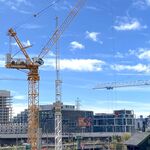My mad Marge moment: Blizzard
BY CHRISTINA BLIZZARD, QMI AGENCY
TORONTO - Well, sir, there’s nothing on earth
Like a genuine, bona fide
Electrified, six-car monorail
What’d I say?
Monorail!
Cue the big blue hair.
I often feel like Marge in the Simpsons monorail episode in my lonely opposition to City Council’s plan to build light rail for the suburbs.
Springfield – or as I like to call it, Scarborough – gets conned into buying a monorail by a smooth-talking huckster.
Ring any bells so far?
Marge is the only person skeptical of the monorail salesman’s slick patter.
I think of her every time I hear a transit “expert” tell me how much better above-ground light rail would be.
And yes, I do live in Scarborough.
And Scarberians have had it up to our bluffs with light rail. We have our own version of Springfield’s monorail in the Scarborough LRT, which was foisted on us as a cost-cutting measure.
It’s unreliable, freezes up in the cold and is inconvenient.
We got it for exactly the reasons folk are now telling us we should have an above-ground LRT across Eglinton Ave. E. - it’s the best we can afford for Scarborough.
Other parts of the city get their own sleek underground trains.
Taxpayers spent billions to keep those running and recently made a massive investment in spiffy, state-of-the art trains for all those lucky people who live close to a downtown subway station.
But for Cinderella Scarborough? A ramshackle monorail is good enough.
The money always runs out when it comes to the suburbs.
Can’t afford to go underground, folks, so give up two lanes of a major east-west artery and put up with the construction nightmare that’s light rail.
Like so much else we’ve done with transit in this city, it lacks vision.
We’ve allowed a small group of downtown elitist politicians to dictate to the suburbs on transit.
Enough’s enough.
Toronto is not the centre of the transit universe any more. For too long, the TTC has stood in the way of progress. It must remember it’s part of a larger region.
We should include Durham, Mississauga and York in our plans.
We need the courage to move ahead with a master plan that puts transit lines where they need to be – not where they will line the pockets of political cronies.
Critics of underground transit say we can’t afford it.
Here’s how we can.
Any time a subway line goes through, businesses along that line make a windfall.
What kind of suckers are we to allow developers to profit from the billions in tax money we put into new subway lines?
Ask developers for cash up front - before the lines go in.
Then hand transit planning to the province’s Metrolinx agency and tell them to develop a region-wide, rational system.
Transportation Minister Bob Chiarelli said last week it would be a “slippery slope” for the provincial government to “micro manage” transit in the city.
“It’s an easy out for people to point the finger at the province and say, ‘take us out of our misery.’
“The problem is that the city of Toronto has to put it to a vote,” he said.
Mayor Rob Ford created the problem for himself when he signed the deal, making the transit plan contingent on council approval.
Now that it’s voted for the above-the-ground option, the province is unlikely to move in and overrule them.
The $8.4 billion the province has committed to Toronto transit is still on the table, both Chiarelli and Premier Dalton McGuinty said last week.
So spend the money wisely – and underground.
Look, we built the foundation of a great subway system – then stopped.
After the Yonge and Bloor lines were finished, we should have built a subway under Queen St.
There’s a station roughed in at Yonge for such a line.
It should have gone up Kingston Rd. - and out to the border with Pickering.
We didn’t have the vision.
What did we get?
Monorail!
Monorail!
Monorail!
Monorail!
D’oh!





